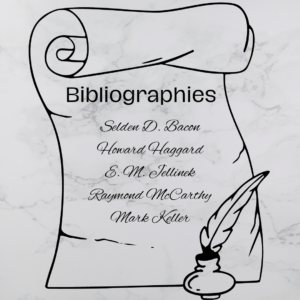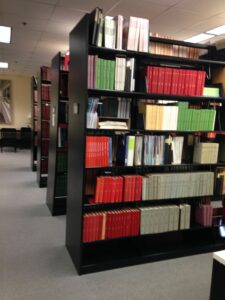 In the previous posts, we covered the process and some sources related to compiling critical bibliographies. For the reader, it must be obvious by now that instead of linear development, the new bibliography is constantly evolving, with ups and downs, a large amount of uncertainty, waiting, and failure. The long process, especially if one works on it on the fly (i.e., not as one’s main job), requires a great deal of patience and persistence.
In the previous posts, we covered the process and some sources related to compiling critical bibliographies. For the reader, it must be obvious by now that instead of linear development, the new bibliography is constantly evolving, with ups and downs, a large amount of uncertainty, waiting, and failure. The long process, especially if one works on it on the fly (i.e., not as one’s main job), requires a great deal of patience and persistence.
Keeping focused, keeping track
The lengthy and zig-zag process poses a challenge: how do we keep track of all the information? How do we know what has been verified? How can we remember the status of items newly added or yet to be verified, working asynchronously and remotely? When we compiled the Jellinek bibliography in 2013-2016 in the then-still active CAS Library, we started with color coding each bibliographic record by verification status in a simple Word document. We created a master bibliography with all records, organized in chronological order first using the two existing, albeit short, Jellinek bibliographies. As we discovered new items, we kept adding them to this master bibliography, wherever they belonged, whether it as a new publication or a reprint.
 Verification of details
Verification of details
The verification process at that time was easier, as most of the print resources were at hand, literally within reach, on the shelves right outside our offices. On the other hand, we lacked the convenience of being able to look up versions digitized outside our collection. Now in 2024, while working on Mark Keller’s bibliography, it’s amazing to see how much more has been accomplished in terms of digitization! In addition to the full run of JSAD, the SALIS collection of the Internet Archive is the greatest help with its full-text books that can be borrowed for an hour at a time after registering for free. Additionally, when it comes to background information, we shouldn’t underestimate our own Digital Alcohol Studies Archives as a source either. With its over 1000 items, it’s a fantastic resource that already led to the discovery of several new publications that we were eager to add to Selden D. Bacon’s published new bibliography last year.
Content defines organization
Going back to organizing information, an Excel spreadsheet with all the details, including the record itself, and the status of verification, is also useful to keep track of progress. There are different views on how to organize these bibliographies in a meaningful manner for public consumption and longevity. In most cases, the chronological bibliography works well, especially if the research output, was mostly scholarly, such as for Howard Haggard, and Selden Bacon.
But it wouldn’t apply to E. M. Jellinek, whose publications, starting in the early 1990s, are all over the place. In his case, upon the suggestion of reviewers, we decided to divide his publications first by item types and genres, separating scholarly content from popular publications. Then, under both headings, we created subheadings such as books, book, chapters, journal articles, book reviews, conference proceedings, report and working papers, and other (abstracts, questionnaires, and letters) listed as scholarly publications, and articles in magazines, brochures, and other (radio transcripts, nonsense verses) under popular publications. Mark Keller’s bibliography, still in its infantry, will likely follow the same organizing principles.
Acknowledgments
Who should we thank for all these details? First and foremost, we are grateful that previous librarians, documentalists, and scholars documented alcohol research and publications with methods available at that time and in formats sustainable enough to survive to date. We also praise all digitization projects in the field, whether by large organizations such as Google Books, HathiTrust, and the Internet Archive, or by small, individual libraries and archives. The digitization couldn’t have happened without the generosity of donors and the efforts of librarians who considered it important to preserve scholarly output. We also appreciate our resources at a large public university, a member of the BTAA, which makes it possible for us to obtain virtually anything from anywhere throughout our own system in the library department with the help of our knowledgeable and conscientious colleagues behind the operations.
Read parts 1-3: Author bibliographies in alcohol studies
Published author bibliographies (with introductory articles)
- Ward, J. H., & Bejarano, W. (2016). A tribute to Bunky at 125: A comprehensive bibliography of E. M. Jellinek’s publications.Journal of Studies on Alcohol and Drugs, 77, 371–374.
- Allred, N., Bejarano, W., & Ward, J. (2017). Howard Wilcox Haggard and the Institutionalization of Modern Alcohol Studies. Journal of Studies on Alcohol and Drugs, 78(2), 325-329.
- Allred, N., Bejarano, W., & Ward, J. H. (2023). A Sociologist and the Problems of Alcohol Studies: The Life and Legacy of Selden D. Bacon. Journal of Studies on Alcohol and Drugs, 84(5), 791–796.